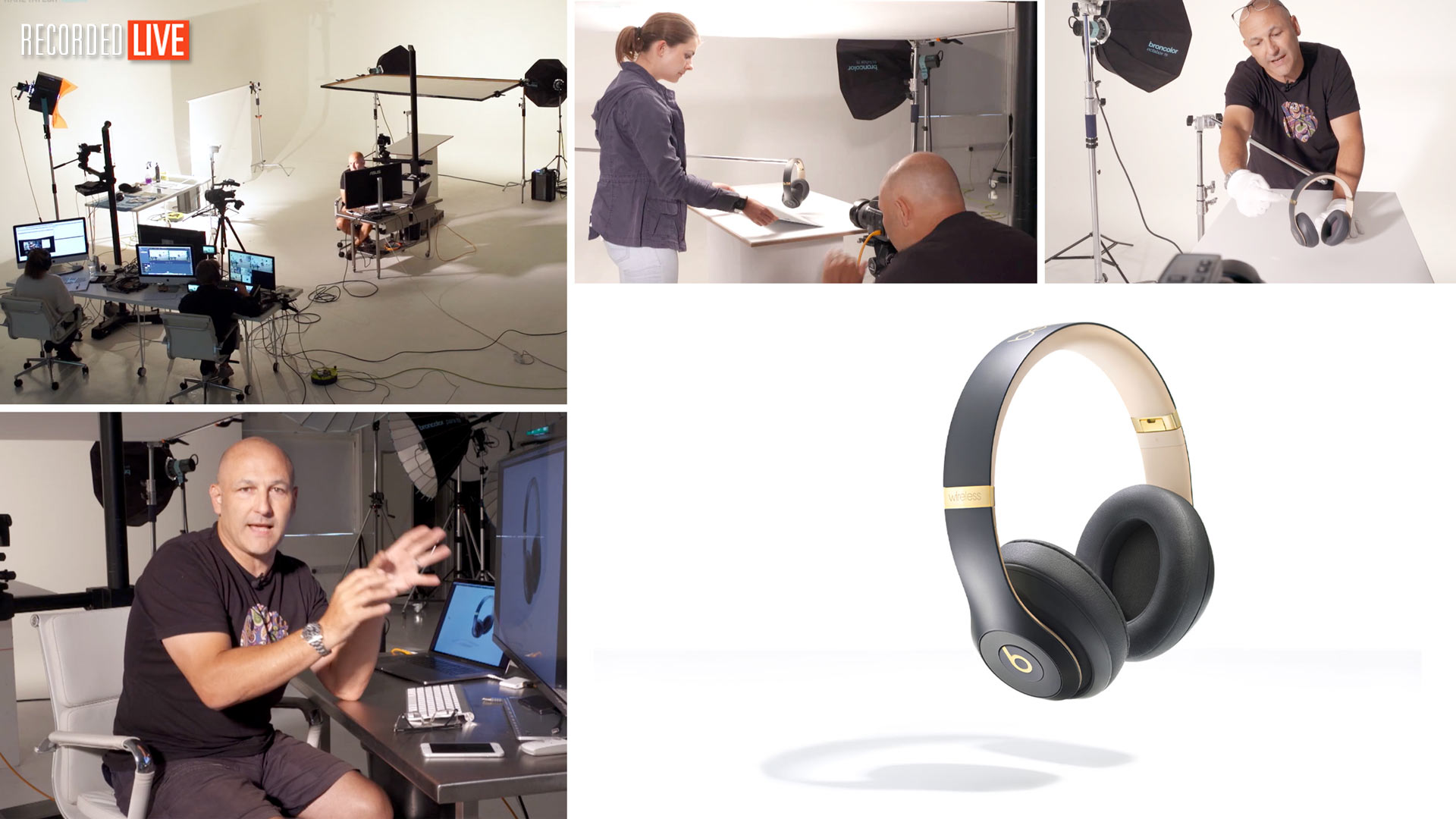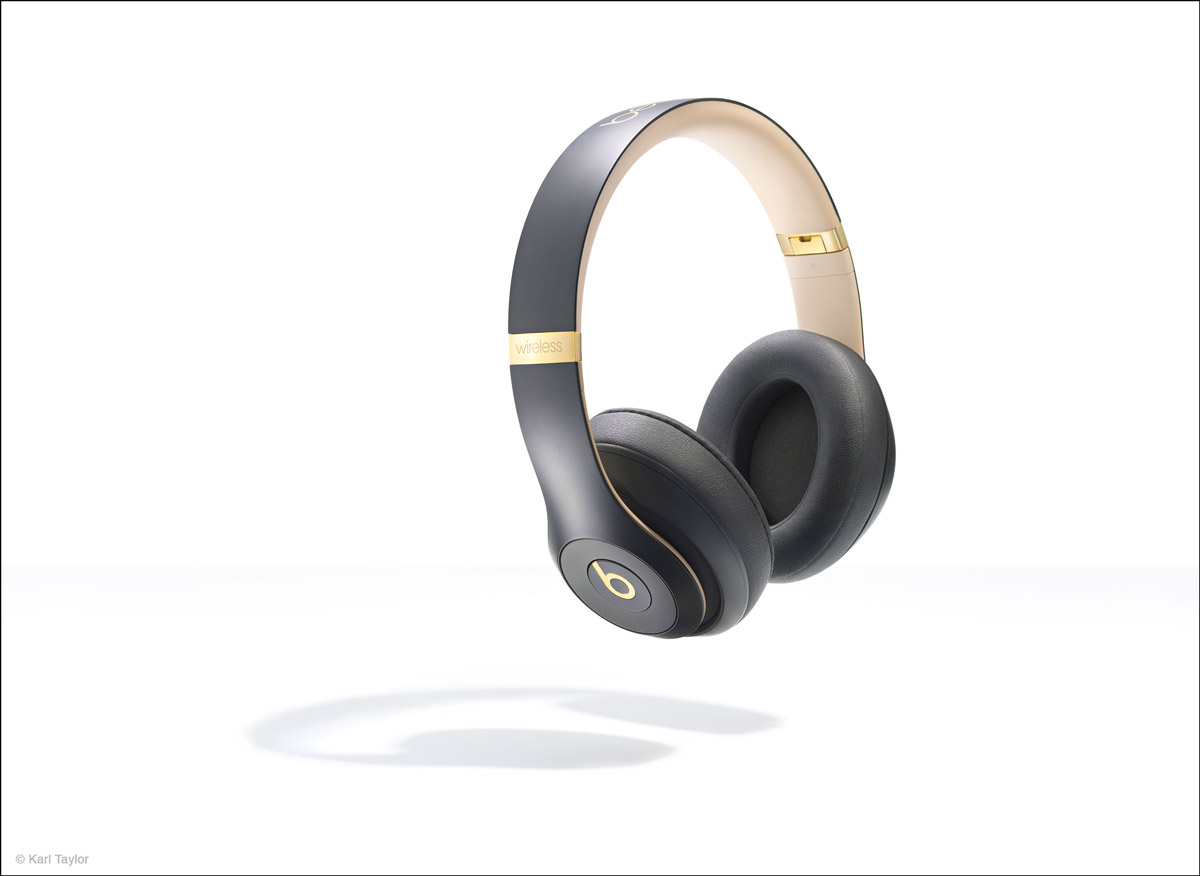High-end Headphones Product Shoot
In this photography workshop, Karl undertakes a product shoot of a pair of headphones on a white background.
This technically challenging advertising-style shot presented a myriad of challenges, including positioning the product to find the best composition, creating a white background without introducing flare, lighting both matte and reflective surfaces, controlling shadows and balancing multiple lights.
Karl details the step-by-step process of creating this shot, explaining his creative decisions, how he plans to overcome each challenge and the lighting setup. He also shares the post-production work required to reach the final image so that members can see the complete start to finish process.
In this class:
- How to photograph a pair of headphones
- Photographing products on a white background
- How to light and photograph matte and reflective surfaces
- How to create gradient lighting
- Using ND and polarising gels for product photography
- Controlling shadows
Questions? Please post them in the comments section below.



Comments
That polarizing gel technique for cutting light off the plastic is fantastic. I learn valuable things in every lesson, and I also spend more money, lol. I started out a few months ago with a Nikon D7200 and a kit lens. I spent a lot of time on Craigslist and now have 5 lights, an old Cambo UST stand, more clamps than a construction site, big sheets of acrylic, a geared head, and the softboxes now seem to be replicating on their own. This hobby has brought me a lot of joy (and cool gadgets) thanks to you and your fine crew. Keep up the great work.
Thanks James.
Thank you Karl I really enjoy it
You mentioned at the top of the video while reviewing final file that you use dodge and burn to clean up imperfections like dust, hair, little holes etc. Just to confirm, I assume you are also using clone stamp or healing brush for this procedure?
Hi Jidoe, it would depend on the type of imperfection. If it’s a bump then I’d use B&D so I don’t lose the original texture but if it was a hair or dust then yes i’d probably be using the healing brush.
Learned a lot. Thank you.
Thank you.
Hi Karl, I was wondering where you get your mirrors from? Thanks, great class
Hi Thanks, acrylic mirrors are available from any good plastic company or sign service companies.
Is there a reason you prefer acrylic to glass?
Hi, Glass isn’t white unless you put a backing on it and then you get a double reflection. Acrylic is easier to handle, it comes in gloss or matt. If you use the gloss side then you only get a single reflection. The downside of acrylic is it scratches easier but it is also available in a range of colours.
I shoot my own headphones in black, hanging with a fishing line. While I was pleased with the outcome, I knew I could do better. Here is the photo : https://ejrojas.com/wp-content/uploads/2020/12/beats_by_drdre.jpg – I found Karl after searching for how did professionals shoot headphones. I signed up to KTE just because of this particular photo. I learned so many things, you are truly amazing!
Very kind thank you and welcome aboard.
Excellent advice on the polarising gels. I discovered them a year ago, an absolute essential tool of mine, but never knew you could lay them on a mirror! That is hugely helpful advice Karl. Brilliant.
Cheers Dave.
I need subtitles, it would be perfect if there are Chinese subtitles.
Hi, we are currently working on this. You can expect this within the next few months.
I like your instructional video very much, and I have already subscribed it, but my English ability is limited and I need to use translation software. If there is no scene, I will be very difficult. I think there are many people in China who like your video, and hope to learn more about photography from you! Thank you!
“If you walk away just with that, you have spent your money well” hahaha I LOVE these little statements! And I agree with them, there was a lot to learn as usual! Thanks. Matteo
Thanks Matteo.
HI Karl, I love these product shots. The lighting/flash – you have them on during the process – obviously to see what going on, would the image still be the same without being an actual ‘flash’ and just use the lights on constantly? Or is the intensity of the flash (going up and down f stops) where the details come in? Just wondering how much difference the ‘flash’ or constant light would change the style?
Simply wonderful. The technique of polarizing the light source is simply wonderful. I have used the polarizing filter on camera a lot but if I polarize one part, the other looks bright.
Dear Karl,
I really want to thank you because of sharing the half polarizing technique, it’s amazing and I’m sure there is no where that I can find these tricks except https://visualeducation.com/ .
keep doing your art and let us learn and enjoy.
Thank you Reza
I saw some products on the table next to the headphones, presumably to treat and clean the headphones. It would be amazing to hear how you would treat different surfaces to look bit more lively on camera.
Hi Karl what is the value of ND gel? 0.3 or 0.6 or 0.9? any advices where to buy ND gel and polarizing gel on internet web site that ship to europe? thanks indeed
Hi I use LEE filters for gels and grads and NDs. A 0.9 is 3stops, a 0.6 is 2 stops, a 0.3 is 1 stop and a 1.2 is 4 stops. Basically every 0.3 is a stop. https://www.leefilters.com/
Karl, another great tutorial! The idea of using a mirror to reflect a gradient is be huge.
I have one question which may be more of a marketing question than photography: the headphones product name were “beat” as spelled out along the head band but you can’t see the name in the final photo. I understand the ‘b’ is probably a trademark and is important but I would think most clients would want the name visible as well.
Hi Bob, thank you and in many cases that would be true but only if it would enhance the image and shooting down on this product it would not. Also keep in mind that a clean advert with lots of space around the image like this would most likely have the brand name in words on the advert. Apple owns this brand so it was shot in that ‘clean’ apple style.